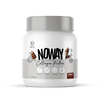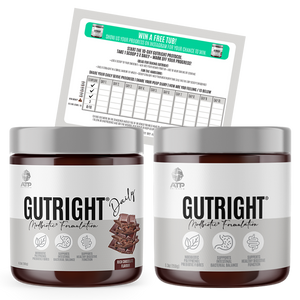Microbiome - 5 Things You Didn't Know About Your Gut!

Microbiome of the gut - we harp on about gut health so much – what can we say, we are a little bit obsessed. There are trillions of bugs in our gut, all kinds of organisms, and science is now riding the next wave of a health evolution. With the aim to understand their roles in our body, to better understand this symbiotic relationship they so intimately share with us humans in ours and their survival. We have collated 5 top insights on things you may not have known about your gut until now…
Fibre doesn’t just govern the firmness of our poo!
Fibres including that of soluble, insoluble fiber and the structure of food based resistant starch which you have heard us talk about and teach you how to make, act as prebiotics – which stimulates the growth and diversity of the microbiome. Interestingly, in an interview by the NY Times journalist and writer, Michael Pollan – he questioned the experts in this field of study and most said that they put most focus on a whole foods rich diet in terms of pre-biotic honed focus and fermented foods on the health of their gut[1].
Even the healthiest of people have E.Coli
If you aren’t sure what E-Coli/ Escherichia coli is, it is a type of bacteria that normally lives in our intestines without harm in the world to our existence. Except for when it can become pathogenic in nature, often consumed from tainted food. The type of strain is often associated with food poisoning in humans. However, it can usually reside unbeknown to us for our entire lives[2].
The microbiome is more than just Bacteria!
Because of its diversity and population, the microbiome of humans is fast becoming titled the second genome and even a fully functioning organ of its own kind[3]. This is because the microbiome is more than just bacteria, it includes Bacteria, viruses, archaea, and eukaryotes. Infact, these critters existed long before us and have since formed a symbiotic pairing that allows both parties to travel, thrive, and survive. Eukaryotes evolved nearly 1.6-2.1 BILLION years ago! Humans are a measly 6 million years old to put that into perspective. Even older than that are Archea at around 3.5 billion years!
2kg of your weight is in… bugs
Yep, weighing in at approximately 2kg in total – the population of 100 trillion microbial cells, just in the gut alone is estimated to weigh this much. This does not include the microbial population that resides on our skin, oral population, and vaginal microbiome. There are 10 x the number of microbial cells in the gut than there are in total in the human body composition. Try and wrap your head around that one…[4,5]
Microbiome bugs govern our mood
Among one of the most important roles in the microbiome is the harvesting of energy from food for their existence of good and bad bacteria balance, the energy is then utilized in their production of such things as Serotonin our happy neurotransmitter for the brain, enzyme and also vitamins like Vitamin K! This not just limited to these, the microbiota can also synthesize vitamins such as B group vitamins including Biotin, Cobalamin, folate, nicotinic acid, pyridoxine, riboflavin, and thiamine[6].
Learn something new?
What modern science currently knows about the microbiome is less than what we don’t know; as is with any field of exploration and evolutionary science. What we do know is that it holds an extremely promising future for modern health science and may host the frontier in the future of medicine and practice. We can sincerely hope this is the case and cannot wait to see the discoveries yet to come.
References
- Pollan M. Some of My Best Friends Are Germs. The New York Times. 2013 May 19;
- Swidsinki A, Loening-Baucke V. Functional Structure of Intestinal Microbiota in Health and Disease. In: Fredricks DN, editor. The Human Microbiota: How Microbial Communities Affect Health and Disease.Hoboken, NJ: Wiley Blackwell; 2013. pp. 211–253.
- Grice, E. A., & Segre, J. A. (2012). The human microbiome: our second genome. Annual review of genomics and human genetics, 13, 151–170. https://doi.org/10.1146/annurev-genom-090711-163814
- Flint H. J. (2012). The impact of nutrition on the human microbiome. Nutrition reviews, 70 Suppl 1, S10–S13. https://doi.org/10.1111/j.1753-4887.2012.00499.x
- Martin, F. P., Sprenger, N., Montoliu, I., Rezzi, S., Kochhar, S., & Nicholson, J. K. (2010). Dietary modulation of gut functional ecology studied by fecal metabonomics. Journal of proteome research, 9(10), 5284–5295. https://doi.org/10.1021/pr100554m
- Rowland, I., Gibson, G., Heinken, A., Scott, K., Swann, J., Thiele, I., & Tuohy, K. (2018). Gut microbiota functions: metabolism of nutrients and other food components. European journal of nutrition, 57(1), 1–24. https://doi.org/10.1007/s00394-017-1445-8
- https://www.apa.org/monitor/2012/09/gut-feeling#:~:text=Gut%20bacteria%20also%20produce%20hundreds,both%20mood%20and%20GI%20activity.








